
The genus Colletes is a large group of ground-nesting bees of the family Colletidae. They occur primarily in the Northern Hemisphere. They tend to be solitary, but sometimes nest close together in aggregations. Species in the genus build cells in underground nests that are lined with a cellophane-like plastic secretion, a true polyester, earning them the nickname polyester bees.

Colletes hederae, the ivy bee, is a species of plasterer bee belonging to the family Colletidae subfamily Colletinae.

Colletes compactus is a species of ground-nesting bee in the genus Colletes.
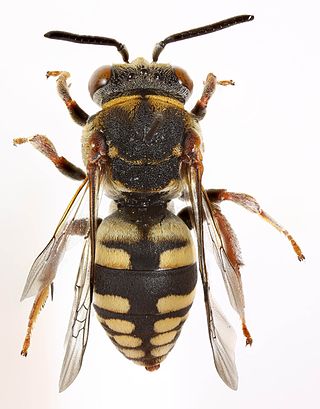
Epeolus cruciger, the red-thighed epeolus, is a species of cuckoo bee from the family Apidae. It is endemic to Europe, where its main host is the common colletes, although other species of Colletes mining bees have been recorded as hosts.

Epeolus is a genus of cuckoo bees in the family Apidae. They are often known as variegated cuckoo-bees. The species is uncommon to rare, and has strong patterns of black and white on the thorax and abdomen. These patterns are made of tiny fat hairs lying flush with the integument or "skin" of the bee. It is easily mistaken for Triepeolus, but is almost always smaller.
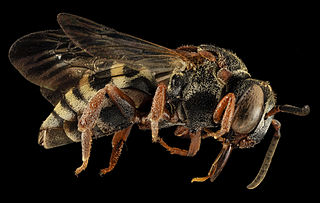
Epeolus scutellaris is a species of cuckoo bee in the family Apidae. It is found in the United States and Mexico.

Epeolus pusillus is a species of cuckoo bee in the family Apidae. It is found in the United States and Mexico. The species is a parasite of Colletes compactus and Colletes ciliatoides.

Epeolus mesillae is a species of cuckoo bee in the family Apidae.

Triepeolus verbesinae is a species of cuckoo bee in the family Apidae. It is found in the United States and Mexico.
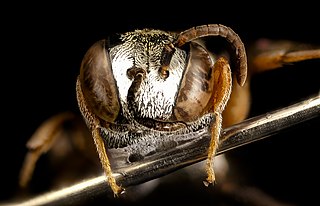
Epeolus howardi, or Howard's cellophane-cuckoo bee, is a species of cuckoo bee in the family Apidae. It is found in North America.
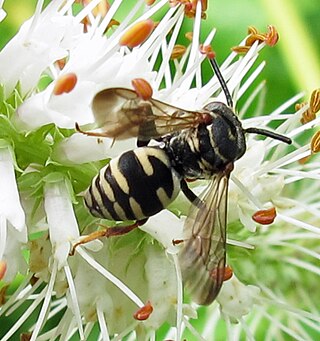
Epeolus canadensis is a species of cuckoo bee in the family Apidae. It is found in North America.
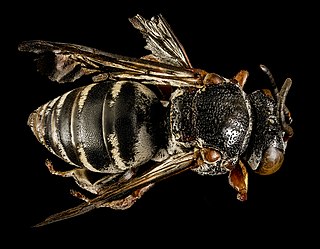
Epeolus lectoides, the cuckoo bee, is a species of cuckoo bee in the family Apidae. It is found in North America. Hosts include Colletes latitarsis and Colletes nudus.

Triepeolus remigatus is a species of cuckoo bee in the family Apidae. It is found in the United States and Mexico.

Epeolus carolinus is a species of cuckoo bee in the family Apidae. It is found in North America.
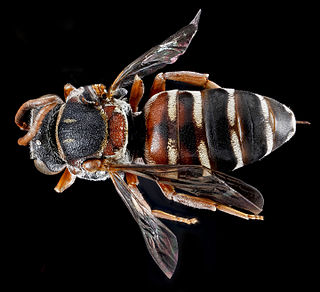
Epeolus zonatus is a species of cuckoo bee in the family Apidae. It is found in North America.

Epeolus glabratus is a species of cuckoo bee in the family Apidae. It is found in North America.
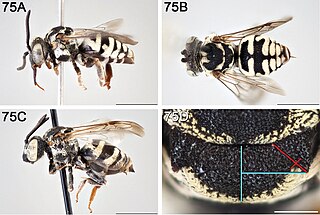
Epeolus olympiellus is a species of cuckoo bee in the family Apidae. It is found in North America.

Epeolus autumnalis, the cuckoo bee, is a species of cuckoo bee in the family Apidae. It is found in North America.

Colletes kincaidii, or Kincaid's cellophane bee, is a species of hymenopteran in the family Colletidae. It is found in North America.

Epeolus bifasciatus is a species of cuckoo bee in the family Apidae. It is found in Central America and North America. It is a parasite of Colletes latitarsis.




















